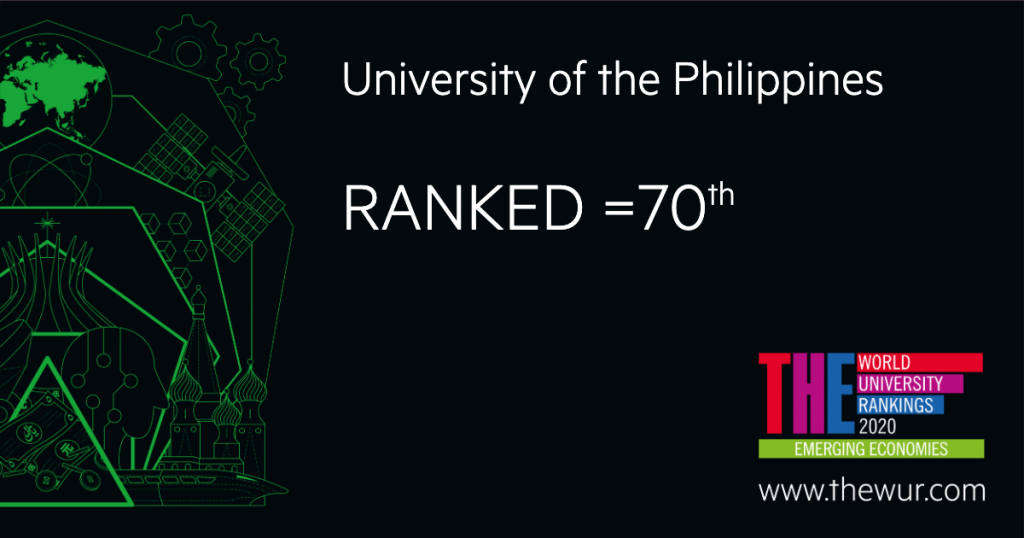(UPDATED) The University of the Philippines is now at the top 70 notable universities from emerging economies in 2020.
This is according to the 2020 Times Higher Education (THE) Emerging Economies University Rankings, where the University had steadily risen from the top 201-250 bracket in 2017, to the top 166 in 2018, and to the top 87 in 2019.
De La Salle University is the only other Philippine university in the 2020 rankings, figuring in for the second year.
As it did last year, China leads the rankings with its universities claiming the top four places. It is also the one represented best, with 81 institutions. India is still second with 56 institutions, while Brazil is third with 46.
THE used London’s Financial Times Stock Exchange Quality of Markets criteria in classifying economies as “advanced emerging, secondary emerging, or frontier.” These include: advanced emerging economies, Brazil, Malaysia, South Africa, and Taiwan; secondary emerging markets, China, India, the Philippines, and Russia; and, frontier economies, Argentina, Malta, Romania, and Vietnam.
UP’s rise in the ranking is remarkable, given an increase in the number of eligible institutions, from 442 last year to 533 this year.
The rankings use the same 13 performance indicators as the THE World University Rankings (THE-WUR) to judge institutions, but recalibrate them “to reflect the development priorities of universities in emerging economies.”
Performance indicators are grouped into five areas. UP’s scores show its strength in citations, where it got 86.9 out of 100, up from 69.1 the previous year. Its next best score is in industry income: 39.4, up from 35.8; followed by international outlook: 38.1, down from 39.8, UP’s only dip in score. The University improved its score in teaching and research: 24.1 and 17.2 from 21.7 and 16.4, respectively.
Data for citations or research influence included citations from 2014 to 2019 of more than 23,400 academic journals indexed by Elsevier’s Scopus database and all indexed publications between 2014 and 2018. Industry income or knowledge transfer looked at how much research income an institution earned from industry, scaled against the number of academic staff it employed. International outlook considered the proportion of international students, staff, and research journal authorship.
Teaching or the learning environment used data from an academic reputation survey and looked at staff-to-student ratio, doctorate-to-bachelor’s ratio, doctorates-awarded-to-academic-staff ratio, and institutional income. Research also used the academic reputation survey, looked at research income scaled against the number of academic staff, and measured research productivity through the number of papers published in academic journals indexed by Elsevier’s Scopus database per scholar.
In 2020, UP is at the top 500 of THE-WUR’s top 1,400 universities across 92 countries.
Reposted from UP System



